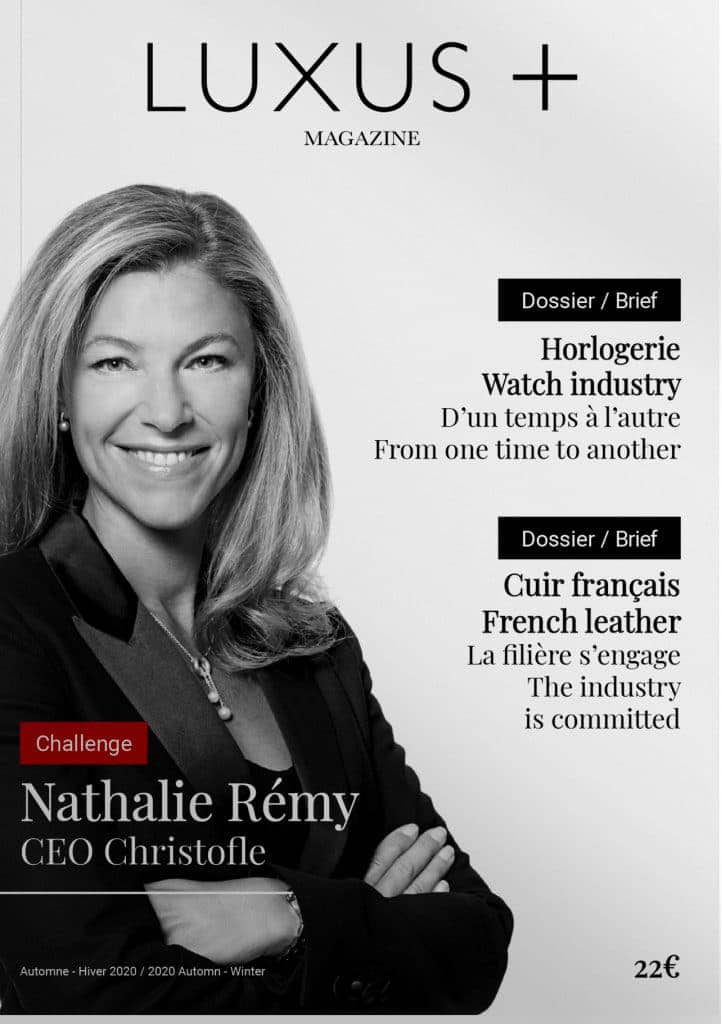[vc_row][vc_column][vc_column_text]
Jean-Luc Dechery is the CEO of the House of Camille Fournet, which he bought in 1994. But the discreet man has also had an eminently public career: a graduate of Essec and former Ena (Voltaire class), he was notably vice-president of the Leather Goods Federation (FFM), which has nearly 300 members. This makes him one of the most important members of the National Leather Council (CNC). Camille Fournet produces 400,000 pieces (or bracelets) per year and its 300 employees work at Tergnier (Aisne), a site that has been expanded with a new eco-designed building inaugurated in 2019.
The international group comprises around ten companies, including several subsidiaries in Asia. For if the French brand is also developing what it knows how to do best, that is to say, the cream of watch straps, it is nonetheless a brand of luxury leather goods. And this, in a sector of activity where the criteria of skin supply are more and more responsible. All the more so as legal regulations are strict in this area, as is the chrome treatment of the skins, or their assembly with glue. Exclusive interview.
What types of leather do you use?
We mainly use exotic leathers and above all Louisiana alligator to exercise our historical know-how in the field of bracelets dedicated to luxury watchmaking, whether for the creations of the House of Camille Fournet or those of the prestigious watch brands that we supply.
In short, we manufacture 400,000 bracelets per year, 75% of which are made of alligator leather. Why is that? Because alligator leather has been the reference leather for the equipment of new luxury watches since the beginning of the 90s. To this, if you add the other exotic leathers, you reach 90% of the skins used. And then the rest is mainly made up of calf leathers, without forgetting fabrics.
For leather goods, it’s rather the opposite: 75% of our materials are calf leathers and the rest is mainly exotic leathers, but not only.
Can you imagine one day replacing the leathers you use with alternative materials?
Leather is the oldest material used by man. Of course, there are still things that can be improved to eliminate allergenic or other substances. Or even perfect the traceability of the origin of the hides, the conditions of breeding, slaughter… But this material remains exceptional and unique. So why dispense with it?
Besides, leather is still very widespread even if alternative materials that resemble it are appearing, although they do not have the same properties. These new alternative materials are much talked about, although quantities are still limited.
What kind of improvements do you think the leather industry could undertake to make it more sustainable?
The French leather industry has been dealing with social issues for several years now. It has, of course, significantly raised its standards of breeding, slaughter and traceability monitoring of the origin of the materials. Today, the traceability of alligator skins is particularly controlled, even more so than for calves.
The latter is organized at every stage, starting with the breeding farms, a growing proportion of which benefit from the International Crocodillian Farmers Association (ICFA) label. The association at the origin of this label brings together farms located all over the world, mainly in Australia, Zimbabwe, South Africa and the United States.
Most tanners, especially those belonging to large luxury groups, are particularly keen to guarantee this traceability. In addition to tanners, there are also leather goods manufacturers – including wristbands – such as us. Today, for example, we are able to trace the origin of a bracelet and answer our customers’ questions on this subject.
YOU CAN READ THE FULL INTERVIEW BY ORDERING THE NEW ISSUE OF THE LUXURY JOURNALS
YOU CAN ALSO FIND THIS ARTICLE BY SUBSCRIBING TO THE MAGAZINE + DIGITAL PACKAGE.[/vc_column_text][/vc_column][/vc_row][vc_row][vc_column][vc_column_text]Featured Photo : Jean-Luc Dechery © Camille Fournet[/vc_column_text][/vc_column][/vc_row]









